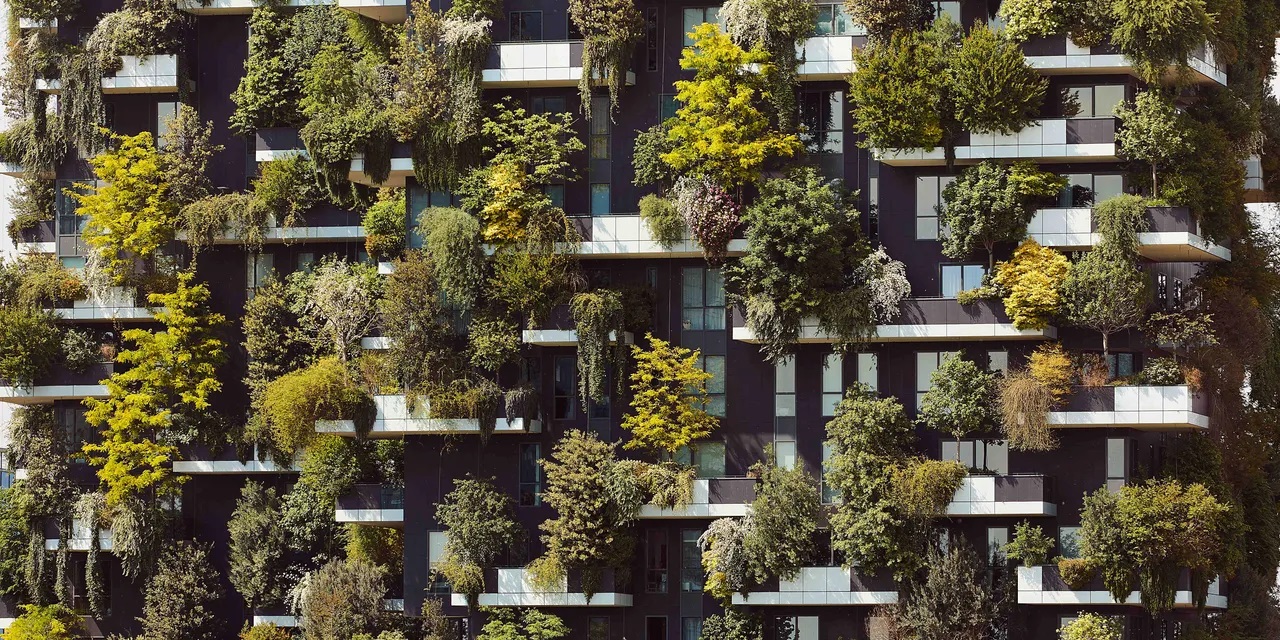Green Buildings
Drive Future Cities to Nature

Bosco Verticale COIMA
Green building is the practice of creating structures and using processes that are environmentally responsible and resource-efficient throughout a building's life-cycle from siting to design, construction, operation, maintenance, renovation and deconstruction. This practice expands and complements the classical building design concerns of economy, utility, durability, and comfort. Green space and healthy living these are the watchwords for the cities of the future. And nowhere are these elements better incorporated into urban life than in Porta Nuova, an innovative and popular district in the heart of Milan. Centered around the enormous park known as Biblioteca degli Alberi di Milano (BAM)—which translates literally to “the library of trees”— pedestrian-friendly Porta Nuova is home to a multitude of Leadership in Energy and Environment Design (LEED)-certified buildings and has grown into a robust economic hub. A highlight of this stellar neighborhood is the award-winning Bosco Verticale, one of the largest, highest and most exclusive properties in the city. This “vertical forest” comprises 111 apartments in two buildings, one 18 stories high and the other 26. Designed by Stefano Boeri Architetti, the buildings represent a pioneering approach to urban living, with the goal of bringing nature into the city.
📌Learn more about Bosco Verticale Project
Hi there! New in this field?
Strategies for integrating Nature into Architecture.
Do you know about these design concepts?
European Climate Pact
The building sector is the largest energy consumer in Europe, representing 40% of the total EU consumption and 36% of CO2 emissions in the EU, according to EC statistical data. By improving the energy efficiency of buildings, the total EU energy consumption could be reduced by 5-6% and lower CO2 emissions by about 5%.
📌Learn more about the European Climate Pact
Do you know the thematic working areas?
Three main reference themes for interregional collaboration have been identified: Eco-construction, bioclimatism and insulation of buildings, Renewable energy integration in buildings, Systems of maximum energy efficiency in buildings and cities The partners have created working groups for each reference theme and are continously working on the mapping of the capacities, resources available and relevant actors in the participating regions, and the establishment of synergies and interregional collaborations for the implementation of concrete pilot projects and actions.
📌Smart Specialization Platform in Sustainable Buildings

Integration of Monitoring Intelligent Systems

👉 Smart Hotel Project in Spain
The proposal focuses on the development of a monitoring and IoT Node project for a new smart hotel in the city of Granada. Based on this project, an analysis of some of the main lines of research related to the monitoring of intelligent buildings, specifically in hotels, is proposed. The project integrates different IoT systems based on Libelium technology, with which monitoring strategies are proposed both at the urban level and inside the building. In addition, the monitoring project for the new smart building includes the requirements for its consideration as an IoT node according to the UNE 178104 standard. This Smart Hotel initiative is part of the needs of smart tourist destinations and the challenges that cities must take on future Smart Cities.
You want to know more?
See this proposal for the V Intelligent Buildings Congress
Madrid, Spain



